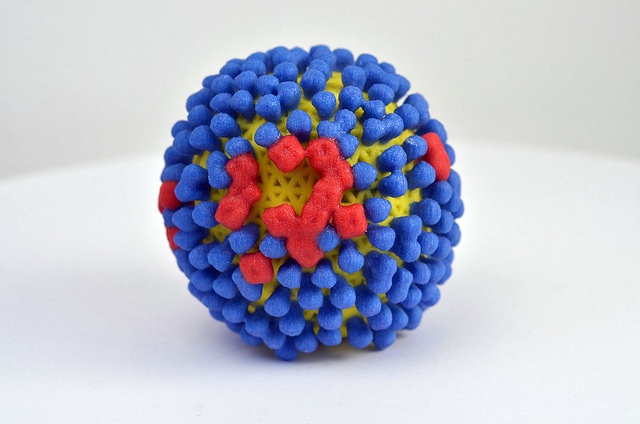4 Apr. 2019. A clinical trial testing a vaccine designed to prevent infections from many influenza strains is underway at National Institutes of Health. The trial testing the new vaccine, code-named H1ssF_3928, is conducted by National Institute of Allergy and Infectious Diseases, or NIAID, part of NIH.
The virus causing flu outbreaks has two main types known as influenza A and B. Influenza A viruses emerge as different strains from the composition of proteins on their surface, called hemagglutinin and neuraminidase, abbreviated to H and N. The various influenza A strains are made up of combinations of 18 H and 11 N proteins. The continuous mutation of flu viruses, particularly influenza A, makes the disease difficult to contain from year to year.
Seasonal flu vaccines are available to prevent contracting the disease, but they rely on accurate projections of the most common strains of flu to appear during the year. Because of the long lead time to prepare and distribute vaccines, those projections need to be made months in advance. As a result, some strains of the disease may not be covered by seasonal vaccines, which can lead to the vaccines being ineffective for large segments of the population. According to annual studies by Centers for Disease Control and Prevention, seasonal flu vaccines were found to be effective in preventing the flu in no more than 60 percent of cases, with that number falling to as low as 10 percent in 2004-5.
“Seasonal influenza is a perpetual public health challenge,” says NIAID director Anthony Fauci in an institute statement, “and we continually face the possibility of an influenza pandemic resulting from the emergence and spread of novel influenza viruses. This phase 1 clinical trial is a step forward in our efforts to develop a durable and broadly protective universal influenza vaccine.”
H1ssF_3928 contains a part of the hemagglutinin protein found in a common stem region of the influenza virus, and as a result is believed to invoke an immune response against many strains of the virus with that same stem. The vaccine is constructed to display the hemagglutinin stem fragment on the surface of nanoscale ferritin particles. Ferritin is a protein found in most living organisms for storing or transporting iron, and in this case acts as a natural platform for the vaccine, configured to look like an influenza viruses to the immune system. NIAID says it tested the safety of an earlier flu vaccine with ferritin nanoparticles in a separate trial, which the institute says indicates the platform technology is safe for humans and well-tolerated.
The phase 1 or early-stage clinical trial at NIH in Bethesda, Maryland is recruiting 70 healthy individuals. age 18 to 70, to test the vaccine. The first few participants will receive one low dose of the vaccine, with the remainder receiving two larger, standard doses 16 weeks apart. Participants are divided into different age groups to gauge possible adverse effects and immune responses of the vaccine as individuals get older.
During the trial, participants will keep track of their body temperature and signs of flu symptoms for up to a year following the vaccine injections. Individuals will also give blood samples two weeks after the injections to measure antibody levels, an indicator of immune response. NIAID’s Vaccine Research Center, the group conducting the trial, expects to complete enrollment by the end of 2019 and start reporting results in early 2020.
More from Science & Enterprise:
- Trial Testing Universal Nasal Spray Flu Vaccine in Children
- Pfizer, Biotech Partner on RNA Flu Vaccine
- Trial Underway Testing Universal Flu Vaccine
- Smart Thermometer Data Speed Flu Forecasting
- Vaccine Shown Effective Against Range of Flu Viruses
* * *


 RSS - Posts
RSS - Posts
[…] NIH Launches Universal Flu Vaccine Trial […]